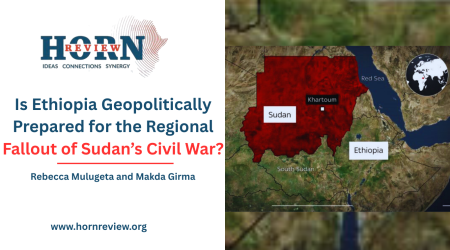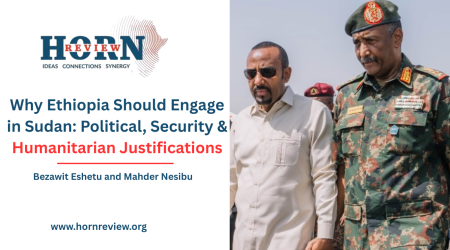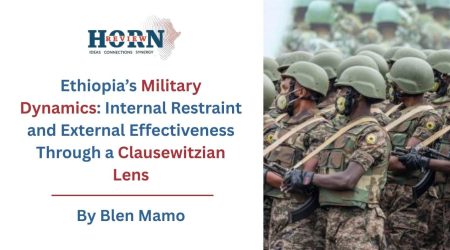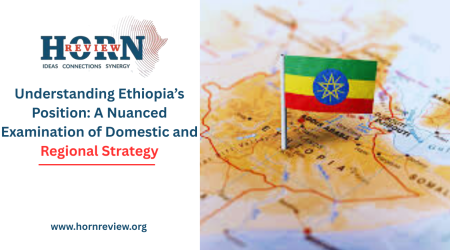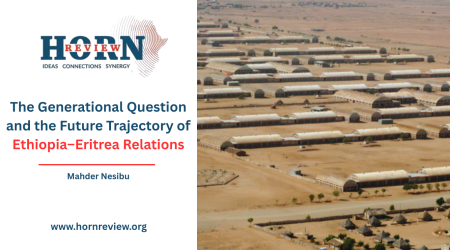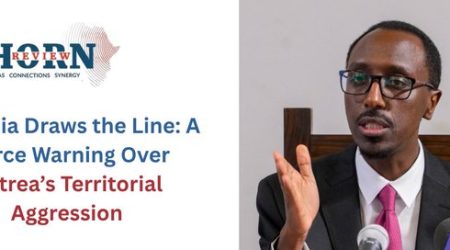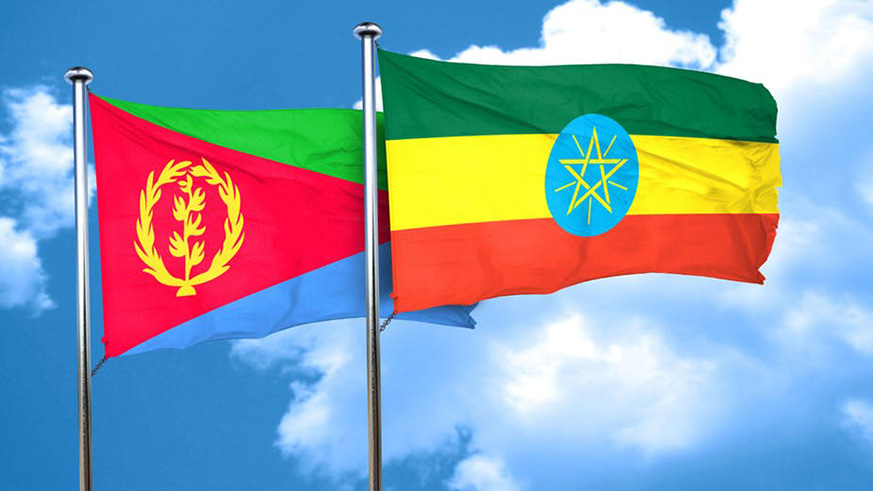
19
Aug
Classical Projection and Paranoia in Ethiopia–Eritrea Relations
The EPLF and TPLF emerged as two of the most effective Marxist guerrilla movements fighting against the Derg administration. The collaboration between the Eritrean People’s Liberation Front (EPLF) and the Tigray People’s Liberation Front (TPLF) during the Ethiopian Civil War was a partnership of convenience rather than a brotherhood based on a shared vision for the future. The TPLF, formed in 1975, initially aimed to overthrow the central government and implement its own version of the Ethiopian revolution rather than seeking independence. The TPLF received critical support, including training and arms, from the EPLF, a more experienced and dominant force in the region. This pragmatic collaboration allowed both movements to grow and withstand massive Derg offensives, with the EPLF providing the TPLF a sanctuary in Eritrea and the TPLF supporting the EPLF’s survival during the Derg’s Red Star campaign. The alliance culminated in the joint overthrow of the Derg in 1991, with the TPLF-led Ethiopian People’s Revolutionary Democratic Front (EPRDF) installing a new government in Addis Ababa, while the EPLF established an autonomous transitional government in Eritrea.
The fragility of this alliance became immediately apparent after their shared victory. Their post-1991 divergence was a critical point of no return, leading to a schism rooted in political, ideological, and economic factors. Following the fall of the Derg, EPLF leader Isaias Afwerki led Eritrea to de facto independence in 1991, which was formalized by a UN-supervised referendum in 1993. He established a one-party state, the People’s Front for Democracy and Justice (PFDJ), which has never held a national election. In contrast, TPLF leader Meles Zenawi established a transitional government in Ethiopia based on ethnic federalism. The personal relationship between Meles and Isaias, initially positive, deteriorated after Meles, influenced by U.S. pressure, agreed to hold elections within a year. Isaias, however, abandoned his initial promises to create a transitional government and pursued a totalitarian system. The institutional divergence between a one-party dictatorship and a multi-party, though TPLF-dominated, federal state created a fundamental political rift that has endured.
The 1998–2000 border war, often framed as a senseless conflict, was in reality a power struggle over economic control and resources. It was not a surprising eruption but an inevitable outcome of a partnership of convenience against the Derg, whose collapse removed the unifying threat. The true catalysts were economic. Following secession, Eritrea enjoyed a privileged economic relationship with Ethiopia, essentially functioning as a single market with a customs union in all but name. Eritrean businesses used this advantage to buy Ethiopian commodities in local currency, export them internationally, and earn hard currency to finance Eritrea’s industrialization. This arrangement was not reciprocal, as Ethiopian businesses lacked similar privileges in Eritrea. Tensions escalated sharply in 1997 when Eritrea introduced its own currency, the Nakfa, and Ethiopia responded by imposing trade barriers and demanding that all trade be conducted in hard currency. This trade war over currency regulation and market access was the true root cause of the war, later masked by nationalist rhetoric and territorial claims over a contested border.
To understand Eritrea’s current geopolitical posture, it is necessary to move beyond a simple recounting of events and apply a robust theoretical framework. Classical Projection is a geopolitical strategy that emerges when a state’s leadership, embodying the pessimistic, self-interested worldview of classical realism, projects its own aggressive and destabilizing intentions onto a perceived rival. This is not merely a rhetorical tactic but a fundamental survival mechanism for authoritarian regimes. By accusing an external actor of hostile actions, the leader can justify militaristic policies, deflect from domestic policy failures, and create a narrative of perpetual siege that bolsters regime legitimacy.
For a totalitarian state, projecting a constant external threat is a powerful tool. It provides justification for maintaining a command economy and an oppressive political system, including indefinite national service and the suppression of dissent. A perpetual state of siege allows the leadership to frame all grievances, from economic hardship to the mass exodus of youth, as the fault of a hostile enemy. This dynamic demonstrates how a leader’s worldview can actively shape the geopolitical reality they claim to be merely reacting to, creating a self-fulfilling prophecy of conflict.
The public statements and interviews of Eritrean President Isaias Afwerki provide a compelling case study of Classical Projection in practice. His rhetoric consistently attributes Eritrea’s militaristic and destabilizing actions to Ethiopia. This strategy deflects attention from internal issues while justifying an aggressive foreign policy posture. When Isaias declared that “Ethiopia is acquiring weapons in order to unleash war,” he was effectively issuing a directive for nationwide military mobilization of citizens under 60. When he claimed that Ethiopia’s government was working for unspecified “external agendas,” Eritrea was simultaneously signing a security pact with Egypt as a countermeasure to Ethiopian interests. When he alleged that Ethiopia was “working with adversaries and domestic traitors,” Eritrea was itself violating Ethiopia’s territorial integrity and forming alliances with TPLF factions and other insurgent groups to destabilize Ethiopia from within. These actions confirm that Isaias’s rhetoric is a classic “inversion of reality,” where Ethiopia is accused of the very actions Eritrea is undertaking.
Eritrea’s current actions further prove that the 2018 peace accord was not intended as genuine reconciliation but as a strategic move to isolate and weaken the TPLF, which Isaias viewed as his “primary enemy.” It was not an end to hostilities but a tactical maneuver to pursue a long-standing vendetta. Eritrea’s leadership has since maintained a militaristic and opportunistic posture to counter Ethiopia’s growing influence and its quest for sea access. The recurring pattern of military mobilization, collaboration with adversaries, and the formation of security pacts to contain Ethiopia exemplify Classical Projection. Eritrea’s leadership projects its own aggressive intentions onto Ethiopia to justify its belligerent stance and to deflect from internal failures, creating a cycle in which rhetoric drives action, and action intensifies the risk of renewed conflict.
Averting a new conflict requires a comprehensive, multi-pronged approach that addresses the underlying political and economic grievances. The international community must move beyond passive observation and actively engage in de-escalation. The UN previously imposed sanctions on Eritrea for aiding militants, and the EU has implemented restrictive measures on Eritrea’s National Security Agency for human rights violations. These measures should be strengthened and expanded to deter destabilizing behavior and signal a collective opposition to military aggression.
At the same time, Ethiopia’s pursuit of a diversified maritime outlet is a legitimate right recognized by international law for landlocked states. This quest could become the foundation of a new, mutually beneficial relationship with Eritrea, since conflict between the two countries serves only the interests of their adversaries. Eritrea, whose economy is isolated and struggling under a command system and indefinite national service, urgently needs foreign investment and trade to stimulate growth and create opportunities for its people. Economic collaboration with Ethiopia could break the chain of isolation, attract investment, and offer incentives for change. The benefits of cooperation present the Eritrean people – if not their leadership – with a possible way out of the decades-long cycle of conflict.
By Yonas Yizezew, Researcher, Horn Review

